02:42
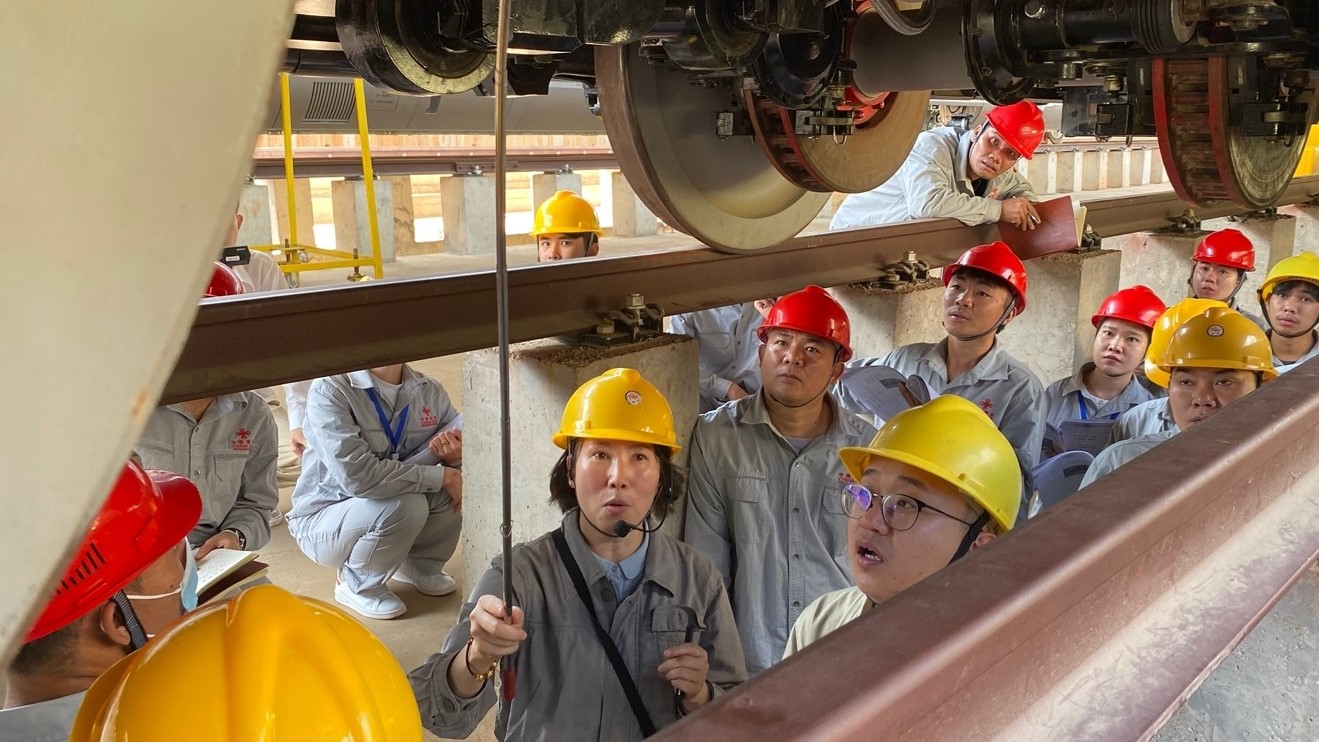
China's blazing-fast high-speed railway (HSR) is witnessing more progress overseas, helping Southeast Asia countries transport more people and goods faster.
More than 30 people from Laos are receiving training on railway know-how in Kunming, the provincial capital of southwest China's Yunnan, as the country needs more specialists in this field after the operation of the railway between the two neighbors.
The China-Laos Railway opened in December 2021, linking Kunming with the Lao capital Vientiane. It transformed Laos from a landlocked country to a land-linked hub.
"I'm very glad that I get the opportunity to study here. I hope I can train more railway specialists in the future," Vilavong, one of the trainees, told CGTN.
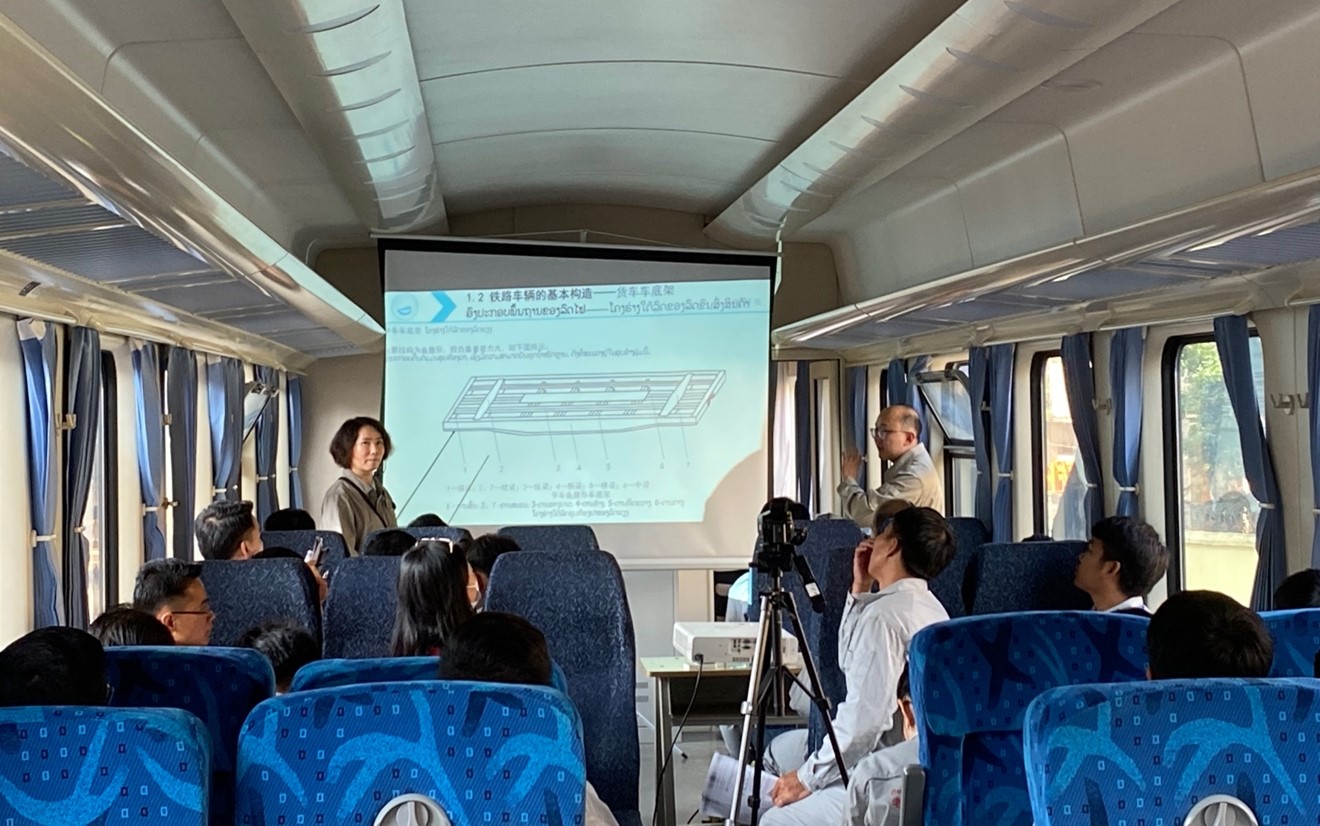
Trainees from Laos learn knowledge on railway transportation at the Kunming Railway Vocational Technical College. Luo Caiwen/CGTN
Trainees from Laos learn knowledge on railway transportation at the Kunming Railway Vocational Technical College. Luo Caiwen/CGTN
Upon completing the two-year training at the Kunming Railway Vocational Technical College, the students will become teachers at a similar vocational school in Laos.
The language barrier is the biggest challenge for both students and teachers, and so interpreters play an active role in the teaching process.
"Despite difficulties, we all work very hard. We also have a Chinese language course given by a professional teacher. And the school has matched each of us with a Chinese peer to help us," said Vilavong.
Teachers also try to develop innovative approaches to pass on the knowledge.
"There was no railway in Laos before, so there were no words describing railways in their language. This is a big problem. So I try to use as many pictures, videos and even animations to help them understand what I teach," said Li Xiuling, a teacher of the college.
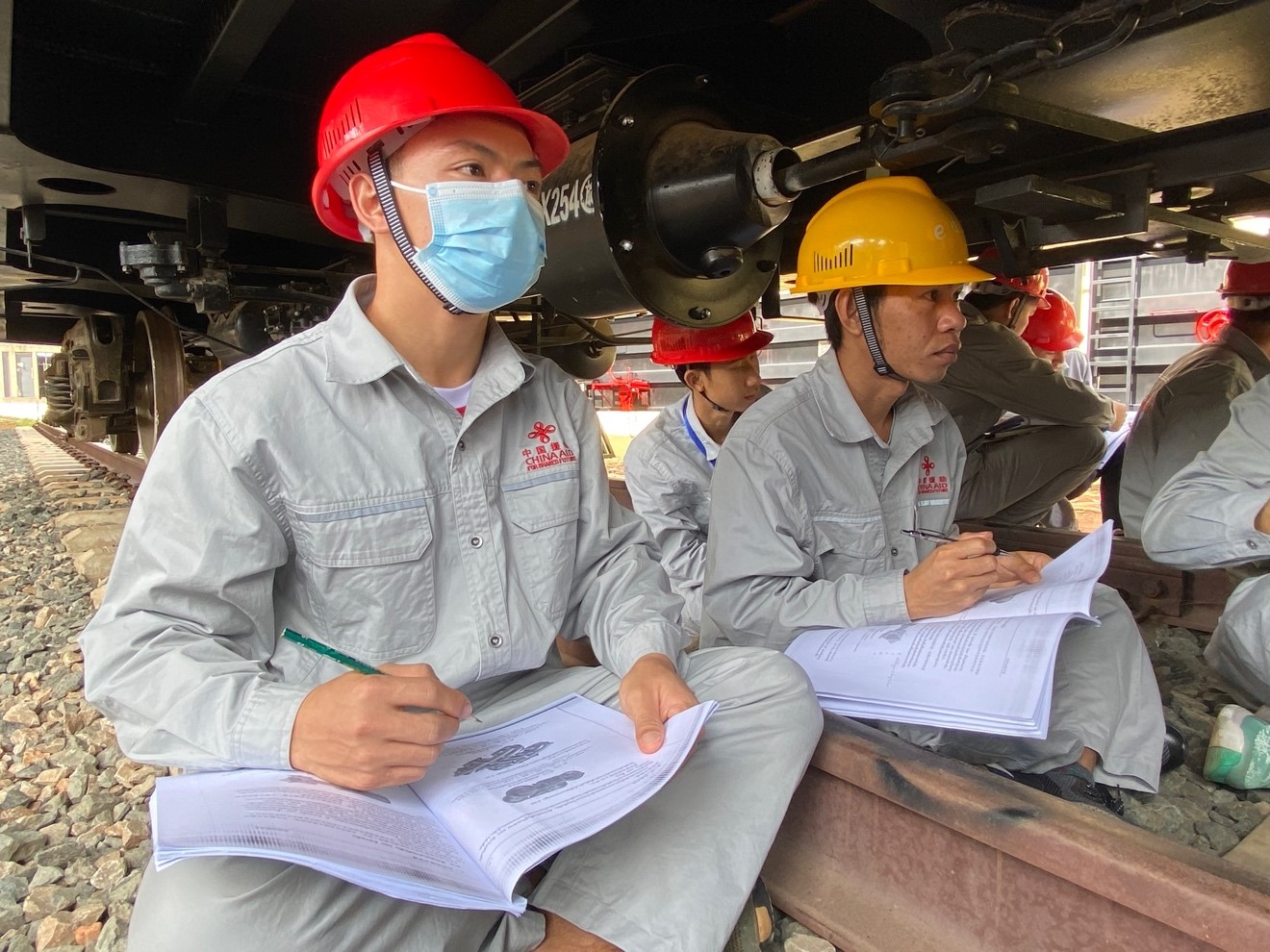
Trainees from Laos attend a class on railway technology at the Kunming Railway Vocational Technical College. Luo Caiwen/CGTN
Trainees from Laos attend a class on railway technology at the Kunming Railway Vocational Technical College. Luo Caiwen/CGTN
Apart from theoretical knowledge, there are also simulated training courses, where the students can learn essential skills in an efficient way.
Li Ruilin, president of the college, said the program will be long-term cooperation. When these trainees start to teach in Laos, the college will send teachers over there to assist them for a five-year term.
The college previously carried out some international exchanges by sending teachers to other countries like Kenya and Ethiopia. Li believes they will gain more valuable experience in this field through this program.
"This program is like a seed. With it, the friendship between the two sides will bloom," she said.
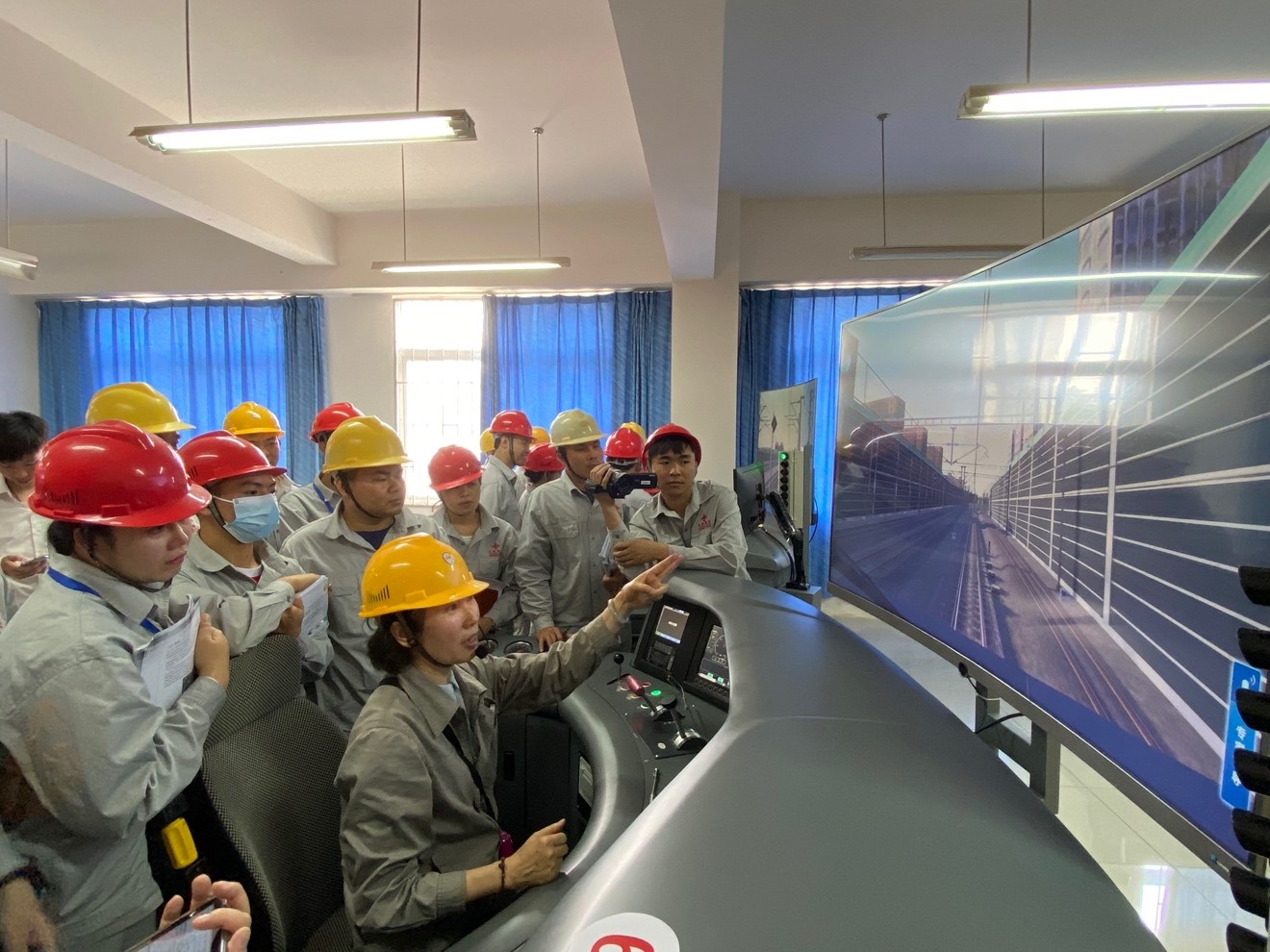
Trainees from Laos attend a simulated training course. Yang Jinghao/CGTN
Trainees from Laos attend a simulated training course. Yang Jinghao/CGTN
The China-Laos Railway has seen a surge of passenger and freight volume. Figures from the operator show that in the first seven months, it has transported more than five million tonnes of goods.
"I hope China and Laos can further expand educational cooperation, especially on the cultivation of railway specialists, to guarantee the China-Laos Railway operates in a sustainable way and benefits more people," said Vilaivone, another trainee.
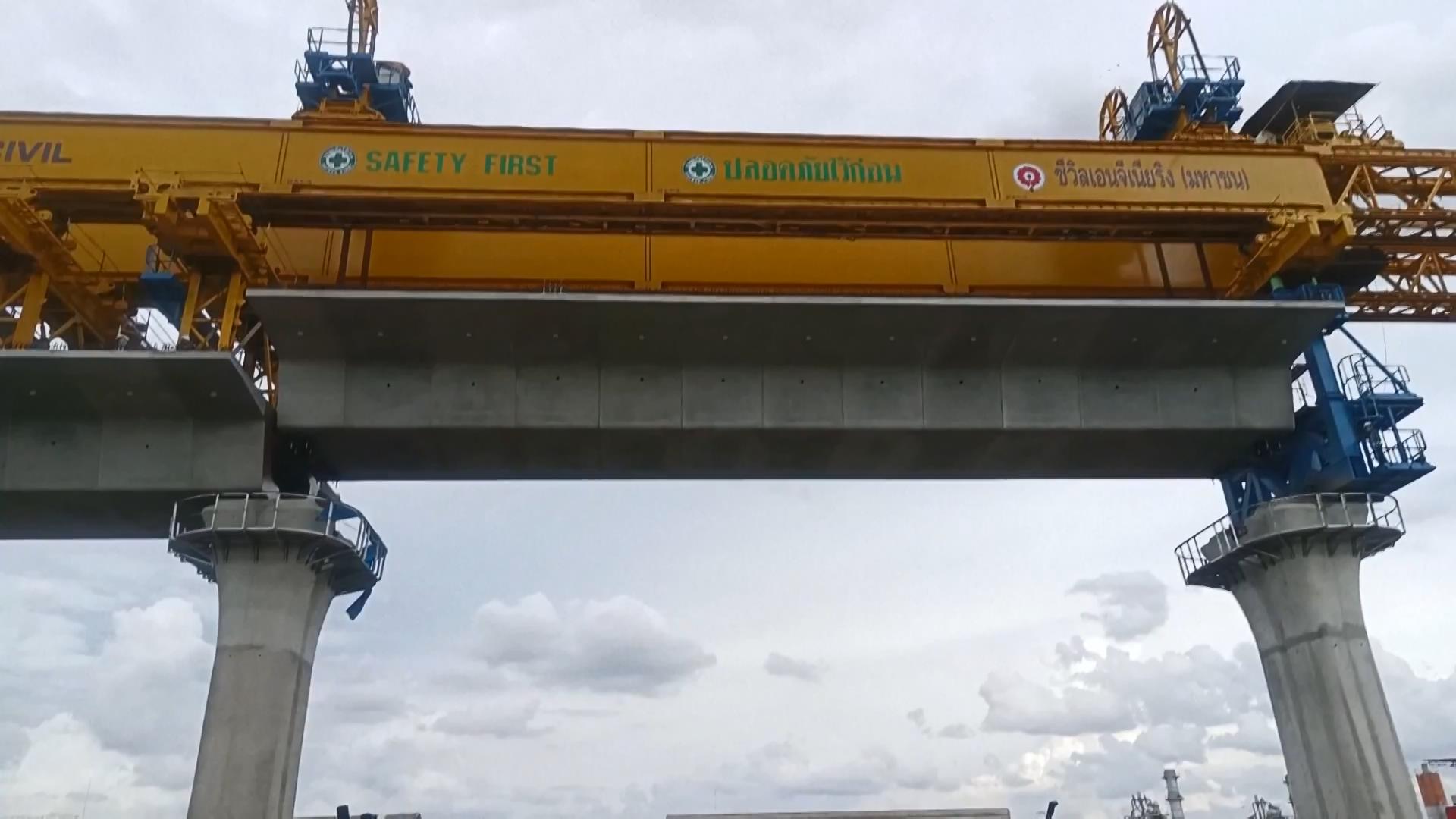
A super-large bridge under construction on China-Thailand railway. /China Media Group
A super-large bridge under construction on China-Thailand railway. /China Media Group
In Thailand, girder erection was completed last week of the first super-large railway bridge.
The first stage of the project involves a 252.3-kilometer-long railway section from the capital city Bangkok to Kele, with a designed speed of 250 kilometers per hour. The railway is the country's first standard-gauge railway applying Chinese standards.
The design team made the piers in the shape of a "slim waist" to highlight local art style and met the country's lightweight architectural style while optimizing pier size and slope ratio.
Thailand has been working in close liaison with China on building HSR, which will serve as a vital mid-section of the extensive Trans-Asian Railway Network linking China with Singapore, one of the most striking cooperative projects between China and ASEAN countries.
As a flagship project under the Belt and Road Initiative, the railway will effectively improve infrastructure and connectivity in Thailand and the region at large after its completion. The railway will link with the China-Laos Railway and promote trade and personnel exchanges among countries.
China and its Southeast Asian neighbors have strengthened cooperation since the creation of the Lancang-Mekong Cooperation, a sub-regional cooperation mechanism created in 2015, which involves China, Myanmar, Laos, Vietnam, Cambodia and Thailand.
On July 4 at the seventh Lancang-Mekong Cooperation Foreign Ministers' Meeting, Chinese State Councilor and Foreign Minister Wang Yi proposed to focus on promoting cooperation in multiple areas in the future, including deepening economic integration, promoting digital cooperation, and keeping closer cultural and people-to-people exchanges.
(Cover photo: Trainees from Laos attend a class on railway technology at the Kunming Railway Vocational Technical College. Luo Caiwen/CGTN)

